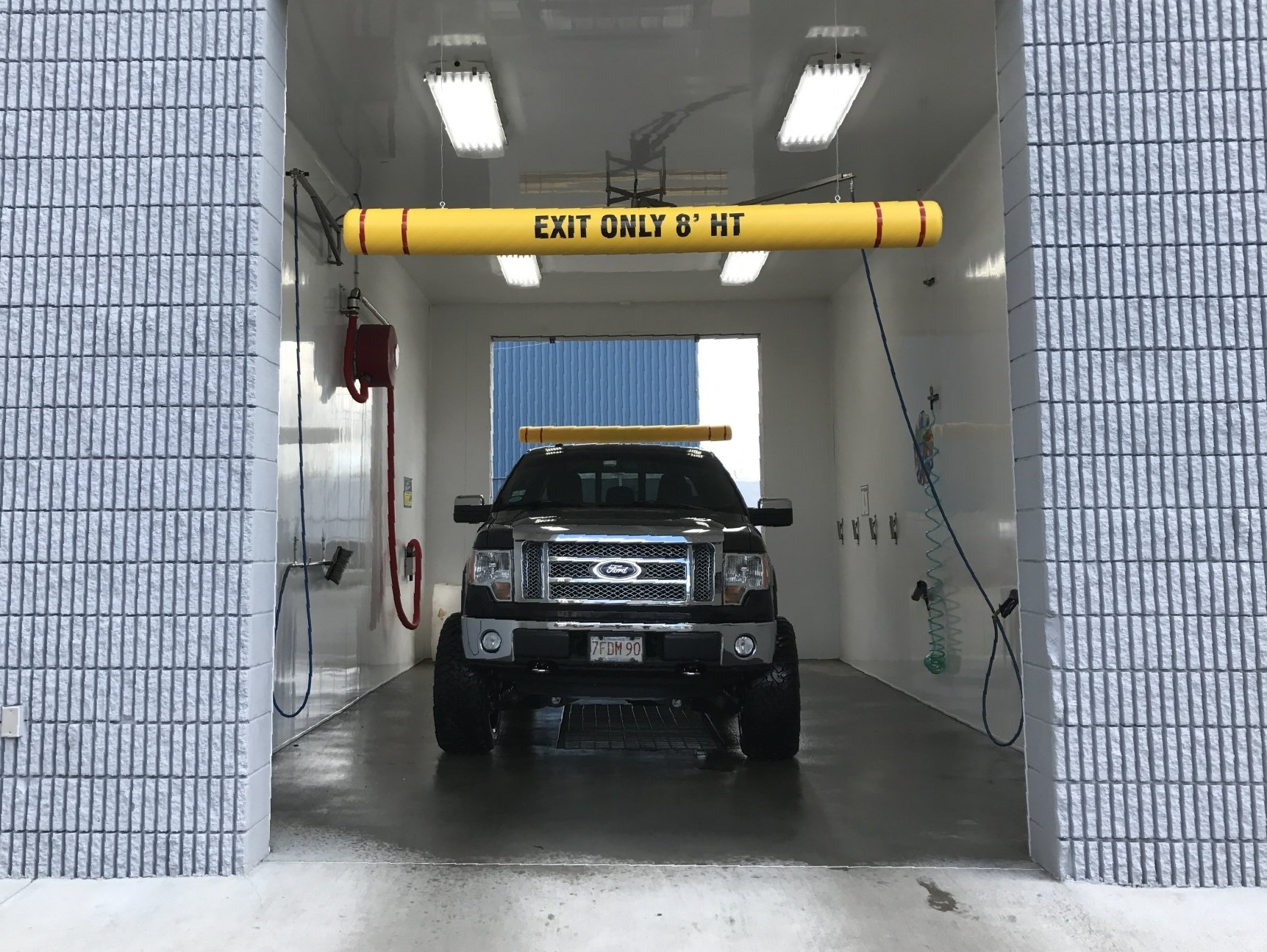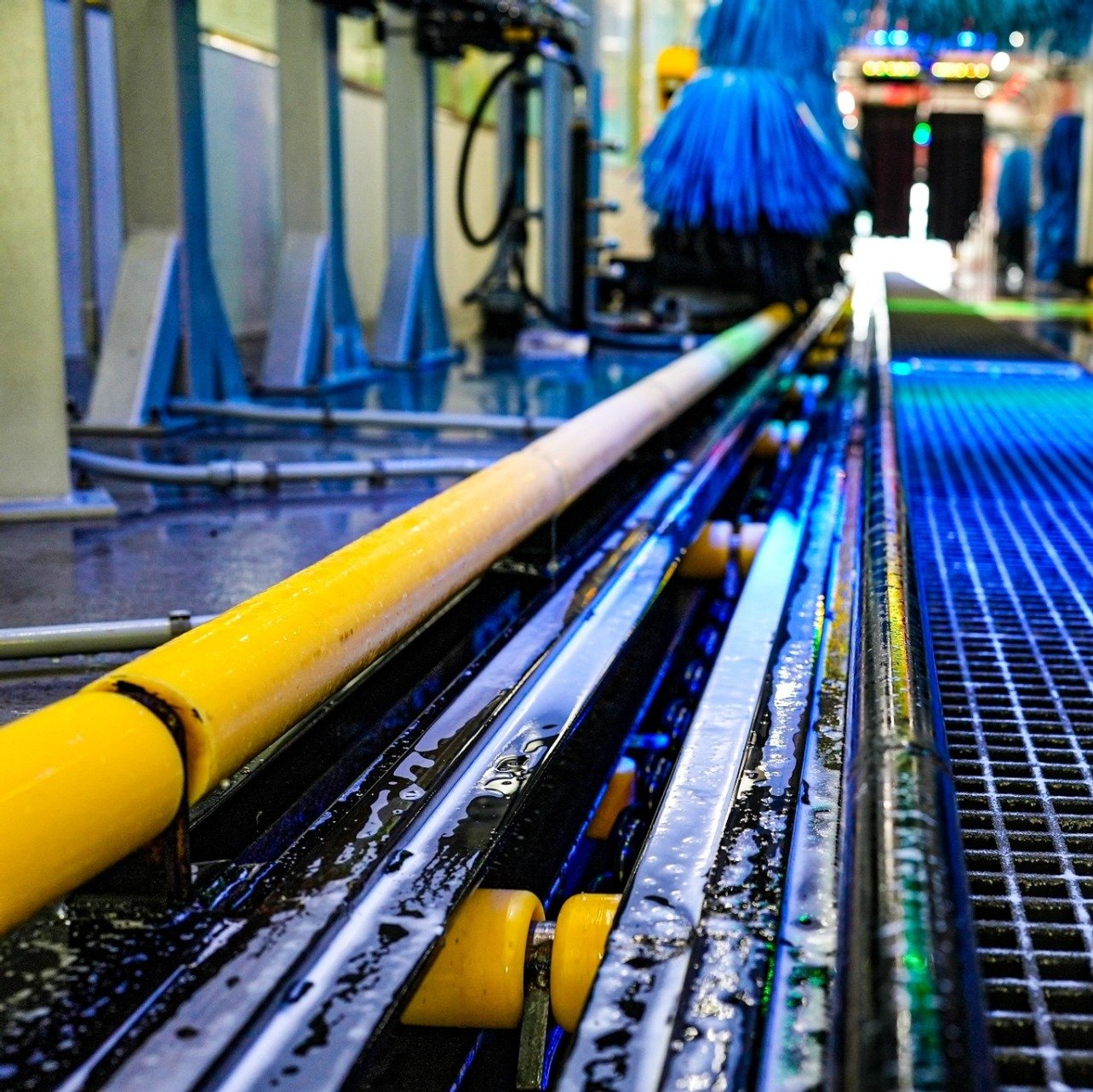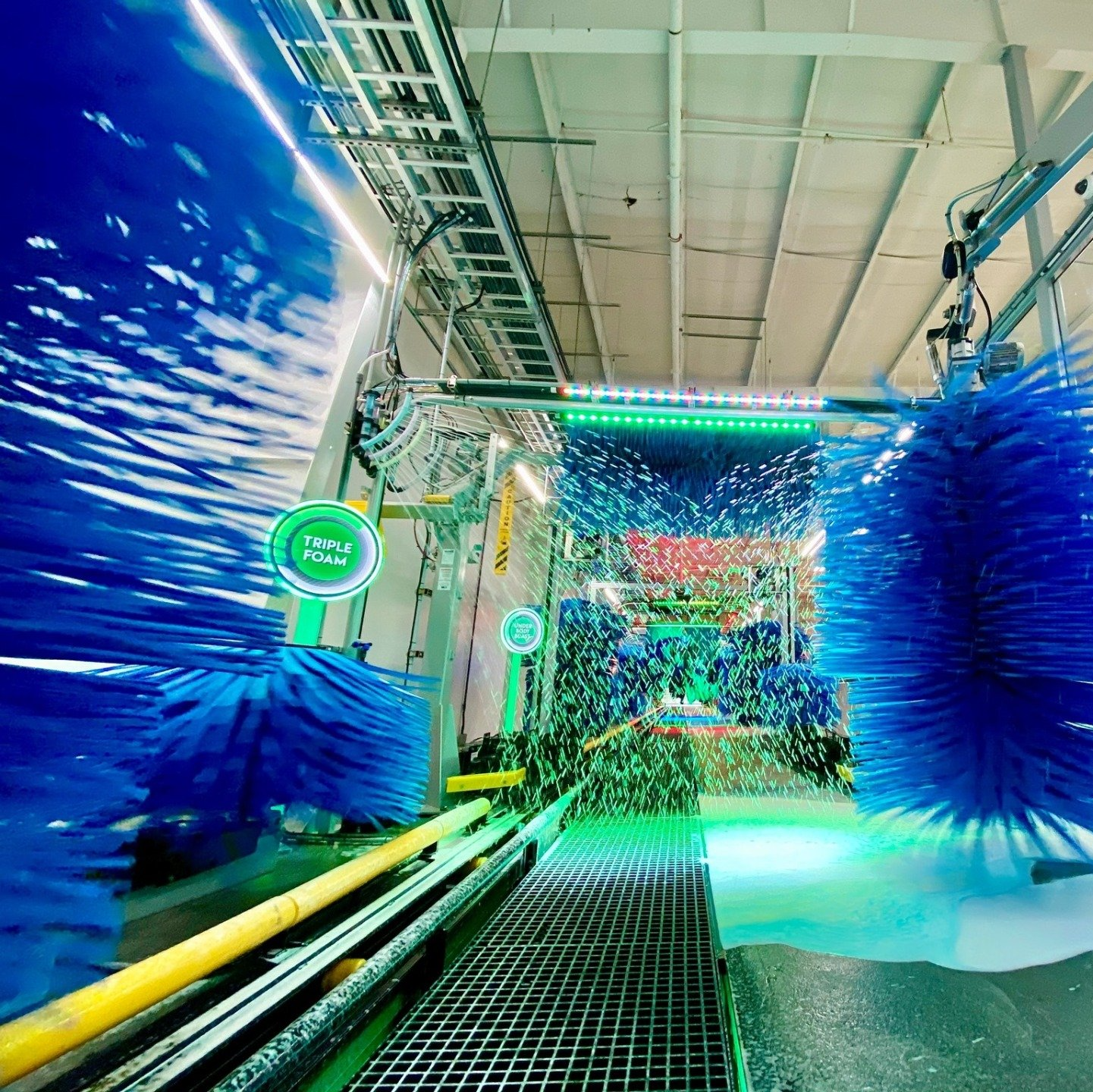GET A QUOTE TODAY - CALL US +1 (844) CAR-WASH

INVESTORS RESOURCE GUIDE
When it comes to car wash suppliers, you’ve got plenty of options. Quality Wash Solutions can help you start out on the right path, get you the best equipment, and help you every step of the way. If you're just getting started, you're in the right place.

Starting a car wash business?
A Little About Our Car Wash Expertise
If you’re considering venturing into the car wash business, you’ve picked an excellent time. The industry has been enjoying decades of growth with no end in sight. The following guide details some of the steps and challenges associated with choosing to invest in a car wash for the first time. If you are leaning towards becoming a first time investor, it's helpful to read through this guide so you have a better understanding the choice behind buying or building a wash from scratch, the challenges of selecting the right location, the process of financing and building a wash, and the first steps in becoming operational while building towards becoming profitable. With our breadth of industry knowledge and understanding of what makes a carwash successful, Quality Wash Solutions can walk you through the development, construction, and maintenance of your wash and sites and help you deliver measurable results. Whatever your vision may be, consulting with an industry expert like us will help you avoid common, yet costly mistakes, present in every step of the way.
ON THIS PAGE:
Planning for Construction
Financing
Marketing

Build or Buy?
Do you want to pick out your land and build your wash from scratch, or are you more interested in purchasing an existing wash and refurbishing to make your wash your own?
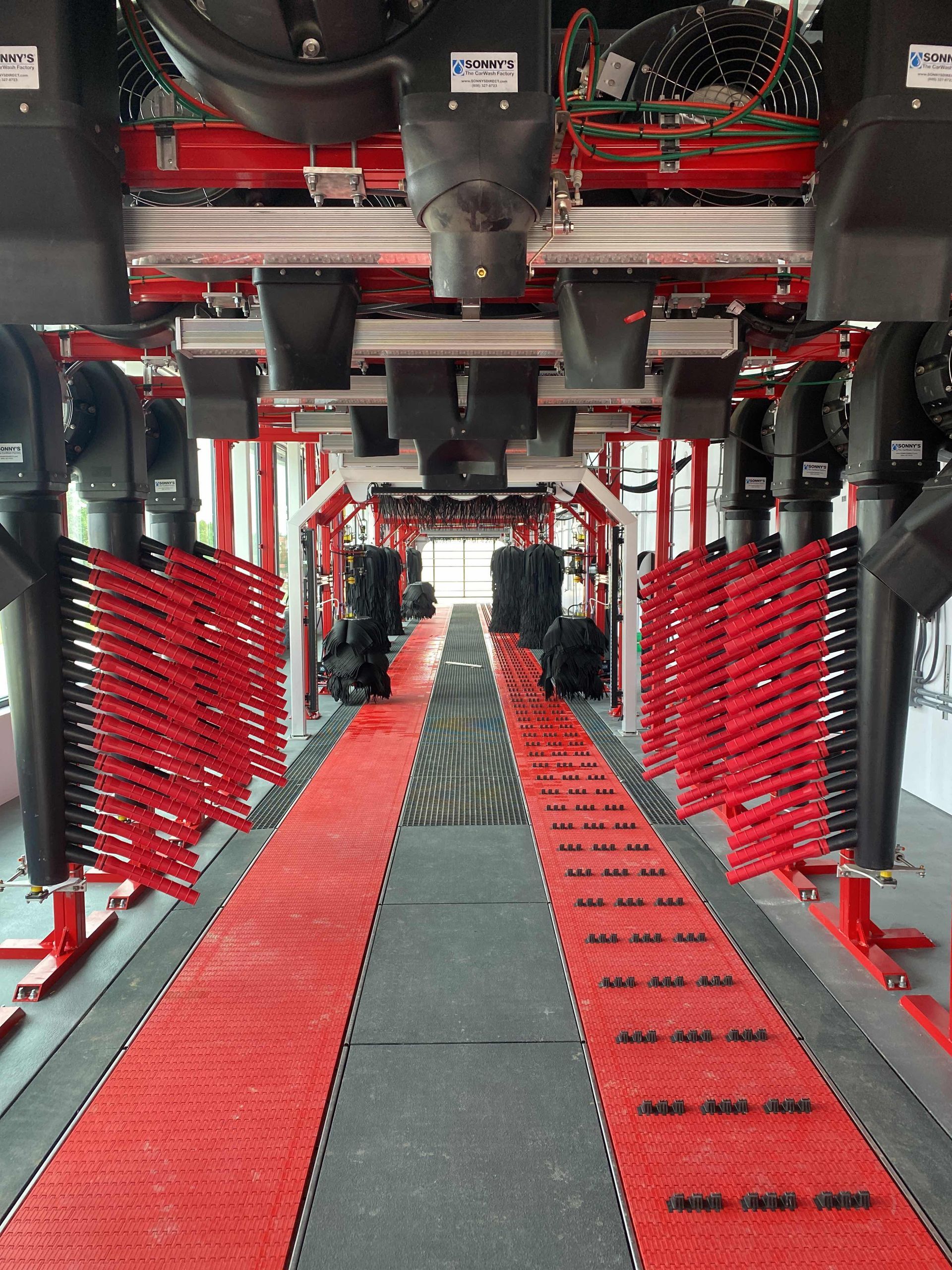
Purchasing an Existing Wash
Buy an Exisiting Wash & Upgrade
While committing to owning a car wash is the first important step, the next major consideration is whether to buy an existing wash or build a facility from scratch. Choosing to build from the ground up or take ownership of an existing site makes a significant difference in your initial planning stages as well as the future success of your business.
For most first time investors, it is recommended to seek out an existing site rather than pursuing new construction, for several key reasons:
- Utilities are already in place: One of the biggest challenges with new construction comes in the form of securing utilities. A wash that is already operational will have electricity, water, and sewer connections in place. When considering a site, hire a professional inspector to ensure that these utilities are working in good order and in compliance with local codes.
- Less legal paperwork: Provided that the previous owner was diligent with renewing necessary permits and filing paperwork, purchasing an operational wash cuts down on the amount of permit filing and legal paperwork in the initial stages of your ownership. Even if everything looks to be in order, it is still recommended to work with a trusted lawyer to make sure everything is in order.
- More Straightforward Financing: Choosing to purchase an existing wash allows you to use the previous year’s financial reports for your pro forma. Having historical income and expense data works in your favor, giving financers more confidence behind accepting your loan application.
When selecting an existing site, it is critical to perform a thorough site inspection. Even well-run car washes will require some repairs and upgrades following your purchase. A full inspection from an industry expert can help reveal particular pain-points that exist in the current wash, from old or damaged components to outdated equipment that impacts the operating time and performance of your future wash. Failing to address these issues early on will sharply impact the performance, uptime, and eventually the profits of your investment.
Alongside your technical inspection, it’s a good idea to evaluate the site’s footprint and consider the addition of secondary profit centers, alternative utilizations of the existing facility’s space, and if you will rebrand the wash following your purchase.

Building from Scratch
Building your Dream Car Wash
While choosing to purchase an existing wash allows you to skip some of the more tedious, confusing, and difficult aspects to getting a car wash operational, it does eliminate some of the freedom associated with getting your vision off the ground. Normally recommended for investors that have one or more sites operational, building from scratch can be a significant challenge, especially for a new operator. The distinct advantages to building are attractive for someone looking to build a prospering facility, and possibly a brand, from the ground up.
A Blank Slate: The most obvious advantage, and one of the more overwhelming components to some, is the ability to tailor a site to your exact specifications. Your new construction may be built in a way that accommodates your future vision, allowing room for expansion and growth as your site’s profits increase.
Reputation Control: New construction comes with new vision and a blank reputation. When purchasing an existing site, depending on how the site was run, you may end up inheriting some negative attributes and reputation from the previous owner’s operation.
Branding Consistency: If you have one or more sites under your belt, your new construction may choose to borrow elements, or even copy design, from your existing washes, leading to consistency in your branding and image.
Building requires a wealth of additional work on the front end, including site assessments, filing for permits, and seeking utility hookups. Additionally, financing without the benefit of previous year’s income and operation cost makes seeking a loan more difficult.
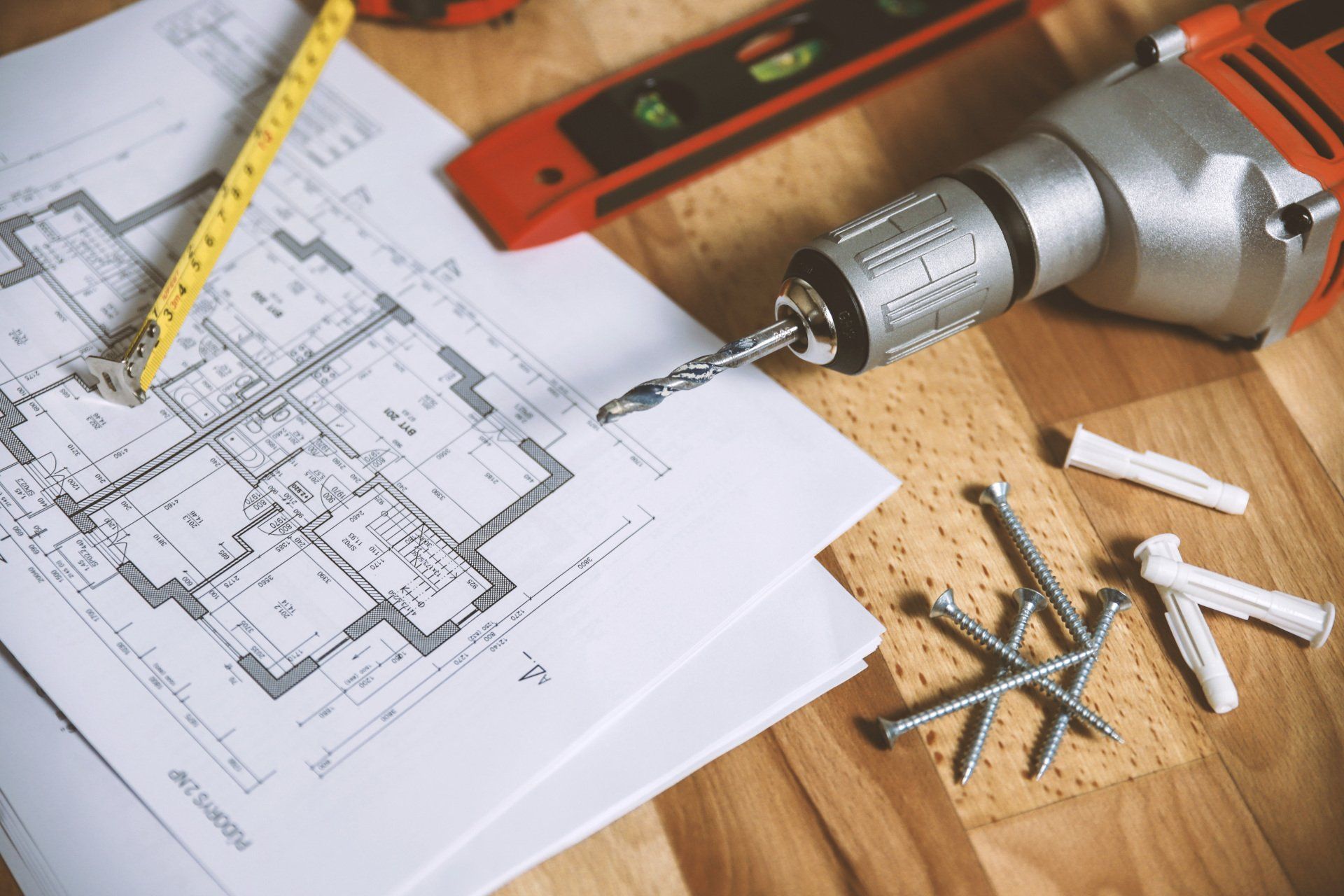
Making your Choice
How to decide what would be best?
Ultimately, choosing to buy or build will be determined by your vision and your current level of experience in the car wash industry. Regardless of where you are in the process, working with a trusted source with years of industry experience can help make the choice easier. AutoWash Investors can help audit your current plans and work with you to determine which choice is right for you.


Types of Car Washes
Whether choosing to buy an existing wash or build a new facility, understanding the type of carwash that you would like to operate is integral in your initial decision-making. You may want a more hands-off facility that can accommodate significant traffic with quick efficient washes. Or you may want to seek out a full service opportunity, offering customized exterior and interior detailing to your customers with additional profit centers. The type of wash you choose to pursue impacts everything from requiring employees to become operational to needing a more specific type of footprint of your site.
If you are on the fence of which type of facility you are looking to own and run, take some time to consider the following wash types, the maintenance and manpower required for each one, and how they fit in to the location that you are considering.

Self Serve
Car Wash
Self-Service, or “Self-Serve”, car washes provide the necessary tools for customers to wash and detail their car on their own. Geared towards the “do it yourself” demographic, a self-serve wash provides an affordable and simple solution for customers that want to wash and detail their own vehicle but may lack the tools or facilities to do so at home. These washes also accommodate vehicles that are too large or tall for an Inbay or tunnels wash, or trucks that have tires too wide (or double tires) that simply will not fit on a conveyor wash.
Self-Serve washes will typically provide sheltered bays or sites for customers to wash their vehicle privately and protected from the elements. Since equipment is handled daily by the general public, making regular inspections is a must. A leaking hose, a dirty brush, patched or poorly repaired equipment, or a vacuum that is routinely out of order will quickly drive customers away from a return visit. In addition to maintaining equipment, the appearance and cleanliness of the wash bays, building, and surrounding area plays a big part in attracting customers and ensuring that they will return in the future.
To compliment your customer’s experience and your revenue, providing a la carte opportunities can be a big enhancement. Having vending machines on site with air fresheners, small detail products, and even towels will provide a fuller experience. And keeping these items stocked consistently will leave the customer confident that they will have everything they may need on-site should they forget to bring an item along with them.

In-Bay Automatic
Car Wash
In-Bay Automatic Car Washes are a transition point between a self-serve wash and the more advanced types of washes. Customers may purchase a wash, often customizable, at a pay station and pull into a covered bay, similar to a self-service wash. With their vehicle parked, an automated machine will perform an exterior wash and the customer will exit through the other end through a series of air-powered dryers.
In-Bay Automatics offer an easy and customized experience for your customers while having the benefit of needing no attendants to be on-site at all times. A tiered “good, better, best” package is often offered to customers at the pay station, with the tiers being differentiated by different options such as undercarriage cleaning, tri-foam applications, and rain protectant. This provides an opportunity for upselling more advanced and profitable washes without staff on-site. There are many different types of automatic in-bay washes, including touchless and soft-touch options (often with the same machine), all of which provide a slightly different experience for your customers. LED lights, scented wash chemicals, and creative branding can turn an automatic wash into an experience that will draw lines of cars.
With moving machine parts and chemicals to restock, maintenance on In-Bay Automatics is far more involved than self-serve washes. Having trusted, high-quality equipment installed and access to quality service technicians is key for reducing or even eliminating down-time altogether.

Full Service
Car Wash Tunnel
Full Service Tunnel washes are the largest in the industry and provide thorough cleaning inside and out for cars. Customers drive into the tunnel, where an employee loads the vehicle onto a conveyor that moves it through various wash elements. At the end, staff offer additional services such as towel drying and interior cleaning, including vacuuming, dash wipe-downs, and window cleaning. Interior detailing services, like waxing and carpet shampoo, often require advance scheduling.
To expedite the car wash process and accommodate more customers, a large crew is essential, which can increase costs but often boosts sales through improved service.
Full Service Tunnels provide a wide array of a la carte options, from exterior washes to professional detailing, along with monthly membership packages that encourage regular visits. These memberships can enhance customer loyalty and generate positive word-of-mouth, leading to greater organic traffic.
Like Express Washes, Tunnel Car Washes become community favorites, often engaging in fundraisers and events. With effective marketing and creative branding, a Full-Service Tunnel can

Express Tunnel
Car Wash
Express-Tunnel washes are popular for offering full features with minimal staff on-site, providing a unique customer experience. Like In-Bay washes, customers stay in their vehicles as they are moved through various wash elements by a conveyor. Since interior cleaning is not provided, a small crew of at least three can manage the facility. Express Tunnels also feature tiered cleaning packages to encourage customers to spend more, boosting average ticket sales.
These washes often include monthly membership options, allowing customers unlimited washes, which fosters word-of-mouth promotion and organic traffic. Vacuum terminals outside the wash can further draw customers in, converting their vacuuming decision into a full wash. Many operators who switched from paid to free vacuuming report up to a 20% increase in revenue due to this strategy.
Express Tunnel washes can also incorporate additional services through Flex-Service options or operate as Mini Tunnels, which use a conveyor system but clean cars more slowly and accommodate fewer vehicles. An Express Tunnel can become a community favorite with effective branding and

Auto-Dealer
Car Washes
Auto dealerships must keep on-lot vehicles presentable throughout the seasons. Though an on-site wash may seem unnecessary, many dealerships invest in Inbay Automatic Car Washes to maintain their vehicles' appearance.
With minor modifications, a vehicle wash can become a profit center. For example, providing free or discounted washes for customers who purchase cars can attract new buyers. Many dealerships also offer complimentary washes for returning service customers, enhancing their experience.
Since dealership washes are primarily functional, they should require minimal staffing. In-Bay systems can manage the needed volume, although conveyor tunnels are also viable. When considering an on-site wash, weigh its cost savings and potential as a profit source, especially for dealerships far from existing car washes.

MAKING YOUR CHOICE
WHICH WASH IS THE RIGHT WASH FOR YOU?
Choosing which type of wash you want depends on a wealth of different factors. Your level of involvement with daily operation, hiring of staff, and your level of expertise in the industry are all elements that may impact your choice, in addition to if you’re interested in purchasing an existing site or building your own wash from the ground up.
If you’re feeling stuck or overwhelmed with the prospect, consulting with the professionals at Quality Wash Solutions can help you in your initial decision making. We can assist you by building a working plan which involves your carwash goals and narrowing down which carwash type is right for you and your business.

Choosing your Location
Once you’ve chosen which type of wash that you’d like to operate, the next challenge is finding the right spot for it. If you’ve decided to purchase an existing wash, this choice will have been made for you already (but it’s also good to understand location when choosing a wash to buy as well). Location is a critical element to the success of your wash.
Traffic
Regarding traffic, an ideal location will have consistent, but low volume traffic. Customers that have the time to see your storefront and read your signs will hopefully make the decision to buy immediately. A busy street with a speed limit of 35 mph or slower is ideal, giving you the visibility you need while allowing your customers to comfortably enter your lot.
In terms of converting raw data to probable patronage, a good rule of thumb is to plan for about 1.5% of daily traffic count to convert into customers. You may acquire public traffic count data from your local government agencies and compare the volume passing through each possible site to determine how many people (approximately) you may expect per day. This number is also beneficial for putting together your pro-forma in your financial plan.
Traffic patterns should also be considered. Your site should be easy to get in and out of without causing traffic “traps” near the entrance or exit. The safety concerns or inconvenience alone of a difficult entry and exit can push customers away from using your facility.
Consider future traffic as well. Additions to motorways, additional construction in the area, or new infrastructure will certainly influence traffic in the future. Planning for these additions may help you get ahead of the game in some instances.
Community
The community and, more importantly, the traffic that it generates around your prospective wash is also a major factor in your success as an operator. There are several elements that may influence customers lining up to your wash or seeking options elsewhere.
When you’re considering a site, take a tour through any surrounding neighborhoods and take inventory of what you see. Are there buildings in disrepair or several empty businesses nearby? Are the homes in the residential areas surrounding your site taken care of? Regardless of the shine and polish that you apply to the look and feel of your carwash, if customers don’t feel safe or comfortable in the area that it operates in, you won’t receive the traffic you need to make a profit and stay operational.
Pay attention to the condition of actual infrastructure in the area as well, including sidewalks, roads, and green spaces. When these elements are in good condition, it speaks to the city’s involvement in the area and the general safety of the surroundings. You may also consult with the local government to check on crime statistics in the area. That being said, don’t rely solely on these statistics or the reputation of an area alone. Use your own eyes and best judgement to determine if a site looks okay to you.
On the alternative side, is the site that you’re considering in the middle of a particularly affluent business district, chic shopping center, or fine dining restaurant destination? Customers may not associate their elegant experience on the town with a wash and a wax, resulting in less traffic your way.
One of the best areas to consider is a basic shopping destination. The frequent week-day and weekend traffic ties into the errand-running mindset, resulting in more impulse stops from customers as well as planned trips for local shoppers.
Competition
A little healthy competition can be a good thing, but how close is too close to another carwash in the area of a site that you’re considering?
A good rule of thumb is to keep four to five miles in between yourself and another car wash. That’s not to say there aren’t exceptions; if your competition offers a different service (self-serve vs. express tunnel, for example) or the competition is routinely saturated with customers to the point where another local wash may be necessary, moving a little closer might be warranted.
When taking note of local competition, don’t forget gas stations or convenience stores that offer automatic in-bay washes on their premises. Check with the local government to see if there are any other car wash permits being pulled at the same time as yours. You don’t want to accidentally encroach on a neighbor.
Weather
While you may not have any control over the weather in your area, it can still have a substantial influence over the success of your wash. The general rule of thumb with weather in the carwash industry is the more volatile the climate, the more opportunity for customers to seek out a car wash.
While people are less likely to get a wash the day before and the day of inclement weather, the day following poor weather sees an influx of customers looking to rid their vehicles of the mud, snow, salt, and grime that goes hand in hand with bad weather.
Consult historical weather data of the area to spot any particular weather patterns that may indicate busy seasons or even if you feel like a wash is viable in the area.
Visibility
While bordering on common sense, you won’t attract customers to your wash if you aren’t visible. Naturally, your facility should be visible from the road and from a distance and, ideally, from all sides. For instances where this cannot be done, such as in a city center, utilize creative signage on the site and/or next to the closest thoroughfare to attract more business.

Reports, Permits,
Zoning, & Utilities
Next to the look, feel, and function of the site, obtaining the necessary paperwork and ensuring utilities exist are critical. Check with city and county officials to determine which permits you may need for approval to build and operate a wash at the site you’ve chosen. Mandatory permits include:
- Building
- Sewer
- Signage
- Water Service
- Occupancy
Depending on your specific site and location, you may need to acquire more. Ensure that the site that you are considering is zoned for business. If it is not, getting a site rezoned can be very difficult and expensive.
Know Your Ordinances
If you are considering putting up a massive neon sign with your brand’s mascot on top, a local sign ordinance might kill your vision before it leaves the ground. Understanding local ordinances before you commit to a wash and your idea can prevent costly modifications down the line.
Make sure you check with your city, county and state before putting money down on your architecture or signage.
How to Survey A Site
While all of the elements above are necessary considerations when looking at a prospective site, the best option for a new operator is to hire an expert. An industry consultant will understand all of the points above and more, from the square footage needed for your tunnel entrance to if the site has adequate drainage.
The upfront costs associated with a consultant are nothing in comparison to the return on the investment; knowing that the site you have chosen for your wash meets all requirements and will work for you and your customers.

Planning for Construction
Once you’ve decided to build and have chosen your location, it’s time to hire your team, draw up some plans, and working toward executing your car wash building goals. The first step is to seek out and hire an architect. Next, a general contractor is required to execute the plans drafted by the architect.
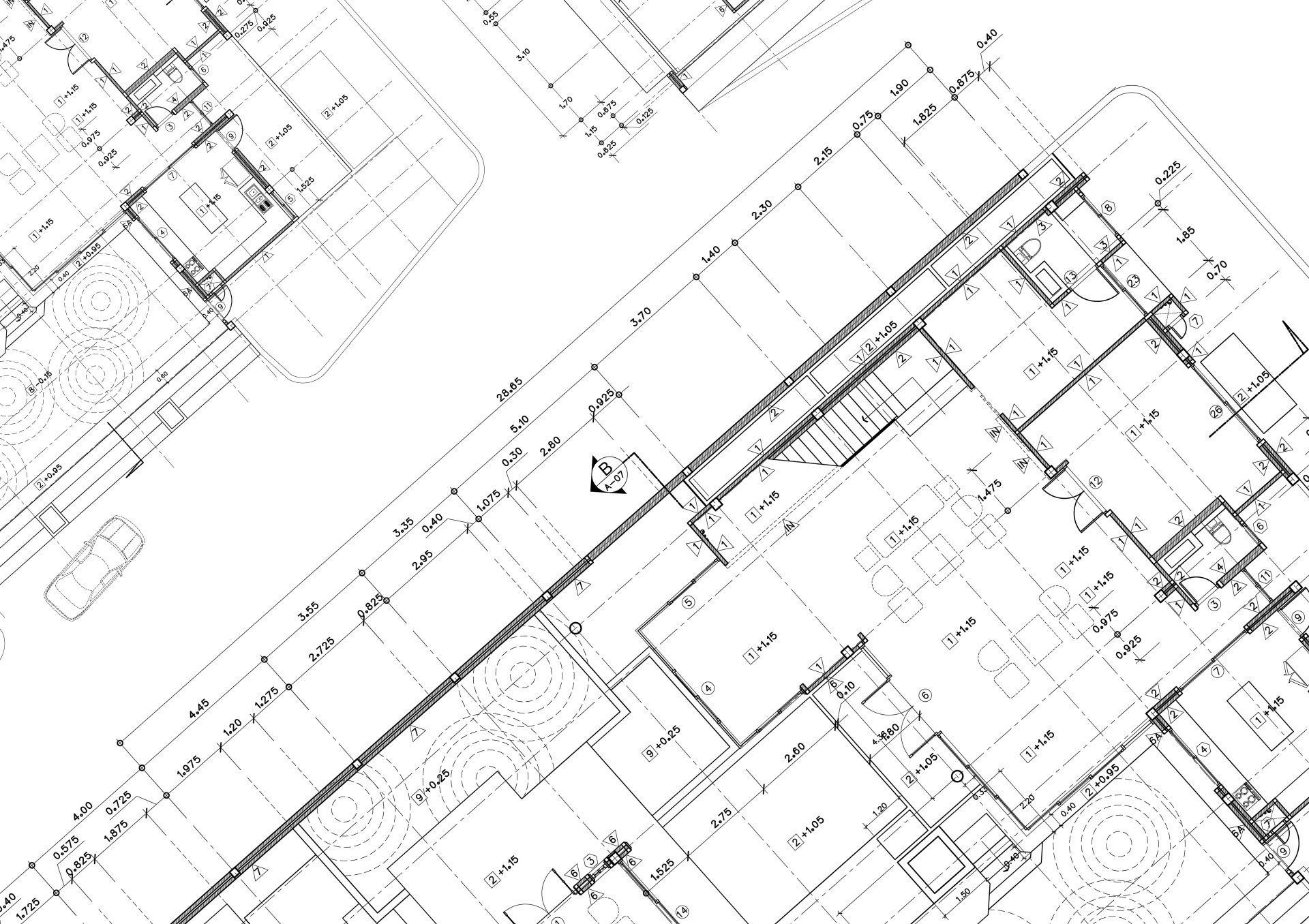
Drawing the Plans
Once you’ve decided to build and have chosen your location, it’s time to draw up some plans.
The first step is to seek out and hire an architect. Your architect will oversee the design of your building and will facilitate any changes along the way. When choosing an architect, take the time to examine their record. Have they built a carwash before? Are they experienced with local codes and regulations? An architect who understands and can design around local ordinances and requirements saves time and money once construction begins.
Additionally, take the time to meet the entire team working under the architect that you’re considering. Depending on the size of the firm you are working with, you may not always be interacting directly with the lead architect.
The blueprints that your architect designs will be a critical element in securing funding from a bank.
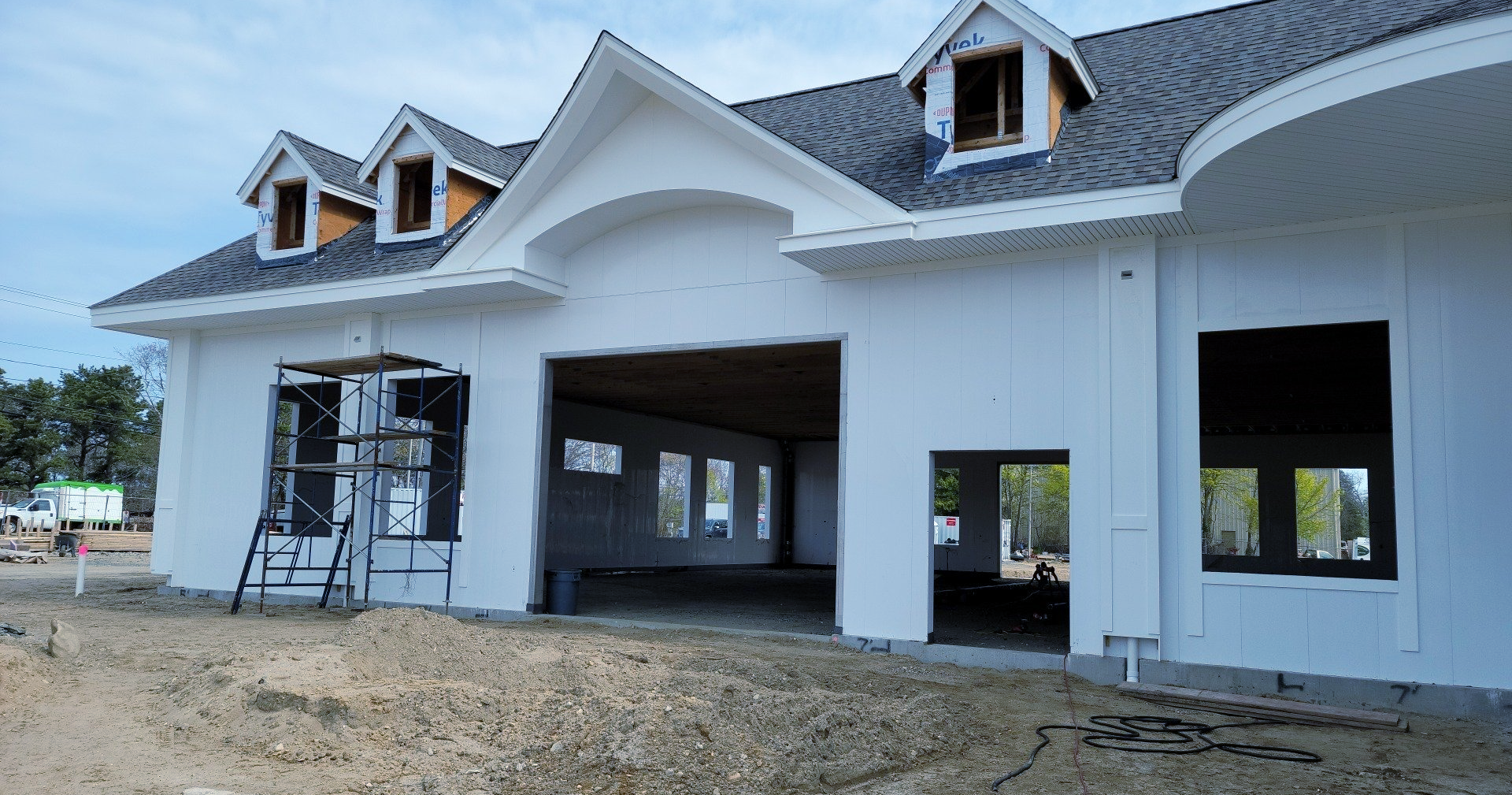
Building your Wash
Next, a general contractor is required to execute the plans drafted by the architect. Much like the decision to hire a specific architect, consider which GC is right for you and your build by examining past work, their level of experience in the industry, and their team. Also, consider their ability to work well with the architectural team that you have hired. Personality clashes between the teams can lead to unnecessary time and conflict during the build.
It is ideal to hire a contractor that has worked on car washes in the past and understands the nuances associated with a car wash build. If the contractor that you are considering has built washes in the past, consider examining them and seeing if their build quality is within line of what you are expecting.


Getting Financed
There are many more steps involved with securing financing, finding the right architect and general contractor, and eventually moving on to building your new facility. As a new investor, this process can be very overwhelming. Trusting an industry expert to guide you through the process from start to finish takes away some of the uncertainty and lets you know you’re headed in the right direction. With the right help and guidance, you can achieve your vision of being a car wash operator while avoiding some of the pitfalls from those who came before you.
Types of Car Wash Financing
Whether buying an existing facility or building from scratch, the initial purchase of a carwash is expensive, regardless of the type of wash you have decided to move forward with. Putting together your budget and financial plan and making sure everything is in order is critical in securing financing and getting off the ground in a timely manner.
You must put together a business case to present to the lender prior to making a financing request with a lender. This will include foreseen budget and income projections, the blueprints of the facility (if building), or the previous years income, expense, and operational cost statements of previous years (if purchasing). Disclosing the research you have gathered from the site, including inspections, permits required, and any concerns or questions raised by the architect or previous owner will influence the lender to approve your loan. Your comprehensive research paired with a solid business case along with a strong plan to get operational are all successful elements for getting off the ground with a lender. Before meeting with a lender, familiarize yourself with some of the financing types you may hear during initial meetings.
Interim Financing:
Also known as “construction financing”, this is the financing that pays for the construction of the facility itself.
Long-Term Financing:
A loan that is paid back in the form of scheduled monthly payments, similar to a mortgage.
Operating Capital:
This will feed your business until it is up and running. Your lender may finance this but it is not guaranteed.
Starting Capital:
This covers one-time and infrequent purchases such as: furniture, office supplies, traffic cones/signs and your first order of chemical products.
Equipment and Fixture Financing:
Sometimes this can be rolled into the long term note, but more frequently the borrower supplies this and uses it as collateral to secure the long term note. This is usually because lenders view equipment service life and depreciation schedule as five year investments, and generally won’t finance them on a long term note.
Regardless of the financing path you go down, you will need to put together a comprehensive list of documentation to present to the lender. This includes a personal financial statement, a resume, and three years of personal tax returns for each owner with at least a 20% stake in the business. Start ups will also require the following:
Business Plan
Traffic count data
Demographic Report
Itemized bids for construction and equipment
Traditional Bank Loan:
Your lender may present a few different types of loan options for you. As a new investor, your options may be limited. Some of the loan types you may encounter are:
Traditional Bank Loan:
Usually requires a loan-to-value ratio (LTV) of 75%. This means you will need to come up with 25% of the loan and the bank will cover the remaining 75% in the form of a loan. Traditional loans may be difficult to obtain as a new business investor even if you have money as banks will be wary of your lack of small business experience.
Don’t forget about startup capital and operating capital when calculating your fair market value. Startup capital usually comes in under $10,000. Depending on the model you choose, operating capital ranges from $25,000 for a self-serve wash to $100,000 for an express exterior to $200,000 for a full-service wash.You can move forward with less, but not having operating capital is very nerve-racking and can lead to business failure.
Small Business Administration Loan (SBA)
The SBA works with lenders to provide loans to small businesses. The agency does not directly give money to business owners, rather they set guidelines for loans from partnering lenders and institutions. This reduces the risk that lenders will lose money and more easily allows them access to capital. This process significantly increases the chance that small businesses will receive loans.
There are two basic types of SBA loans; a 7a and a 504. With a 7a loan, a local lender and the SBA team up to present the investor with various options. This type of loan is great because there are no job creation criteria, and you also establish a local banking relationship that you may need in the future.
With 504 loans, the SBA underwrites a 504 loan directly. It is an excellent program for up to 1.5 million dollars, but it does have job creation criteria that need to be met. Visit www.sba.gov for more information.


West Carrollton, Ohio
All Rights Reserved | Quality Wash Solutions


